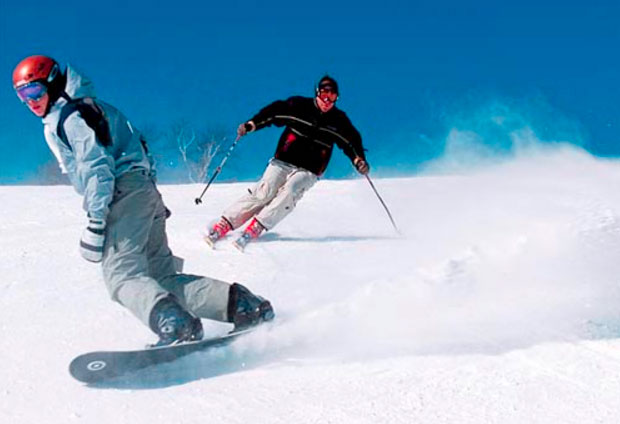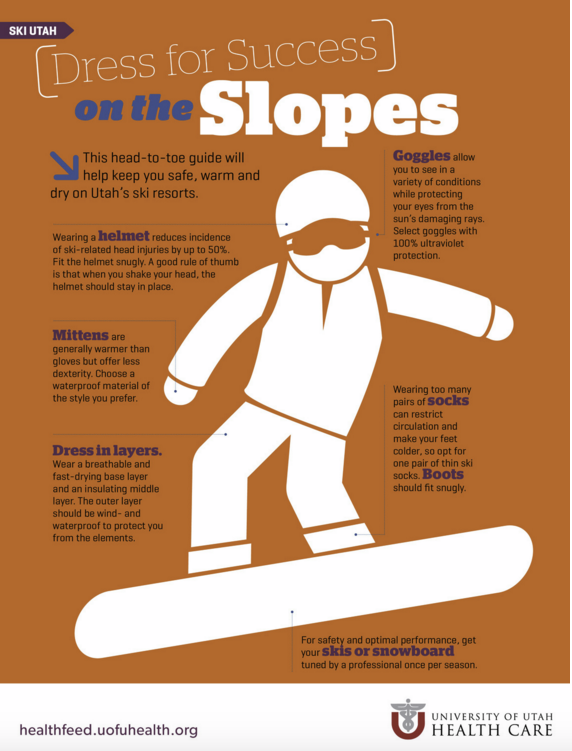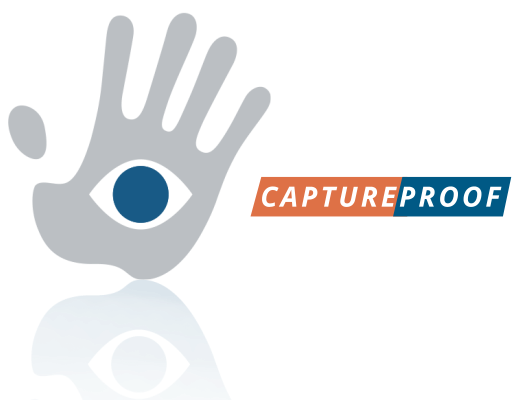Guest Blogger: Regina O'Connor

How did you spend your President’s Day weekend - aka peak ski season? President’s Day weekend, is known as D-Day on the slopes - friends and families making the most of their 3 day weekend.
Snow sports are becoming increasingly popular and approximately 22 million people participate in skiing, snowboarding and snowshoeing each year. Most people hitting the slopes do some runs, take and share some selfies, and end the day at the lodge drinking hot chocolate in front of a roaring fire. However there are a number of people who end the day with pain or injury.
Here’s the top 5 ways people get hurt on the slopes - and tips on how to avoid them:
Sunburn
1) Sunburn can be very painful and upsetting (I mean who doesn't love goggle tan lines?) but the good news is that this is very preventable. Use a broad spectrum sunscreen with an SPF of 30 or higher. Apply this 30 minutes before you hit the slopes and make sure to apply to all exposed skin. Spots like your ears, lips, under your eyes, neck, underside of nose, chin, scalp and hands - often get overlooked, so don’t forget those. It’s also suggested to wear sunglasses or goggles with UV Protection of 99% or more.
 Cuts & Abrasions
Cuts & Abrasions
2) If you borrow or buy appropriate clothing for your snow adventure this will help reduce cuts and abrasions if you take a tumble. Most snow wear has reinforced seams and extra padding in areas where you are likely to slide on if you take a fall. Also make sure that your equipment fits you properly and is correctly set up. If you are renting, have a staff member double check this for you and if you are buying try the suit on for size before you commit to buying.
Cold-Related Injuries
3) Frostbite and hypothermia are rare, but making sure you are warm when you are in the snow is essential. Windy conditions, improper or ill fitting clothing and exertion can mean that it is harder for your body to maintain a healthy and comfortable temperature. Always wear proper fitting clothing, dress in layers and avoid cotton (which gets cold when it is wet). Wear adequate headgear as a lot of heat is lost through your scalp. Adequate hydration and nutrition will also help your body perform in alpine environments -- always pack a water bottle and snacks.
Head Injuries
4) Head injuries account for about 20% of injuries on the slopes. Thankfully 90% are minor. The best thing you can do to prevent and reduce the risk of head injury is wearing a helmet. A helmet acts as a cushion for your head reducing the impact of falls and collisions. Also use common sense and travel on terrain within your skill level - this will help reduce spills.
Limb Injuries
 5) Studies show that upper limb injuries are more common in snowboarding and lower limb injuries are more predominant in skiing. Wrist injuries are the #1 snowboarding injury. The most effective way of preventing these is to wear wrist guards. Lower limb injuries, particularly knee-related, are more common for skiers. There are different opinions regarding knee braces and supports so research and choose according to your individual situation. Just like with head injuries -- injuries are easily prevented by skiing in areas within your experience level and by checking your bindings.
5) Studies show that upper limb injuries are more common in snowboarding and lower limb injuries are more predominant in skiing. Wrist injuries are the #1 snowboarding injury. The most effective way of preventing these is to wear wrist guards. Lower limb injuries, particularly knee-related, are more common for skiers. There are different opinions regarding knee braces and supports so research and choose according to your individual situation. Just like with head injuries -- injuries are easily prevented by skiing in areas within your experience level and by checking your bindings.
Have fun and stay safe - and if you do slip and fall or hurt yourself -- use CaptureProof to capture photos and videos to share with your doctor from the slopes.
